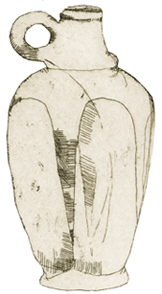
about hand pulled prints
A hand pulled print requires time to make. A metal plate, a wood block, or a lithographic stone can be used to produce multiple impressions of the same image; however, each print is inked, run through the press, and “pulled” – that is, lifted from the printing surface – uniquely each time. The amount and evenness of ink, the pressure of the press, the type of paper and whether it is wet or dry, and other factors, are all choices made by the artist which can significantly vary the outcome of each individual impression.
Every type of hand pulled print has a special physical quality. For instance, impressions made from etched or incised metal plates on which ink is carefully wiped have a slight texture. The ink sits on the surface of the paper – if you ran your finger across it you would feel it. This texture gives the prints a lovely, tangible richness. If the marks on the plate are deep they will even create an embossment in the paper. The edges of the plate also leave their telltale embossment. And the excellent paper used for these prints, usually 100% cotton rag, adds significantly to the distinctive character of a hand pulled print.
In contrast, digital prints (e.g. giclee or iris prints), are either scanned reproductions of original artworks (of any medium – painting, photography, hand pulled prints, watercolor, etc.), or they are printouts of work created on a computer. They are virtually identical and can be produced with the touch of a button in unlimited quantities. They are essentially very high quality, and often very expensive, posters.
I believe the more you know about the different types of prints and methods of printing, the richer your experience as a print viewer or owner will be. It can be a thrill to walk up close to a print in a gallery or in someone’s home and recognize how it was printed. It is almost like a secret language intelligible only those who have taken a little time to study it.
contact
Moon may be contacted at moon@salalmoon.com.
Back to ABOUT THE ARTIST page.
